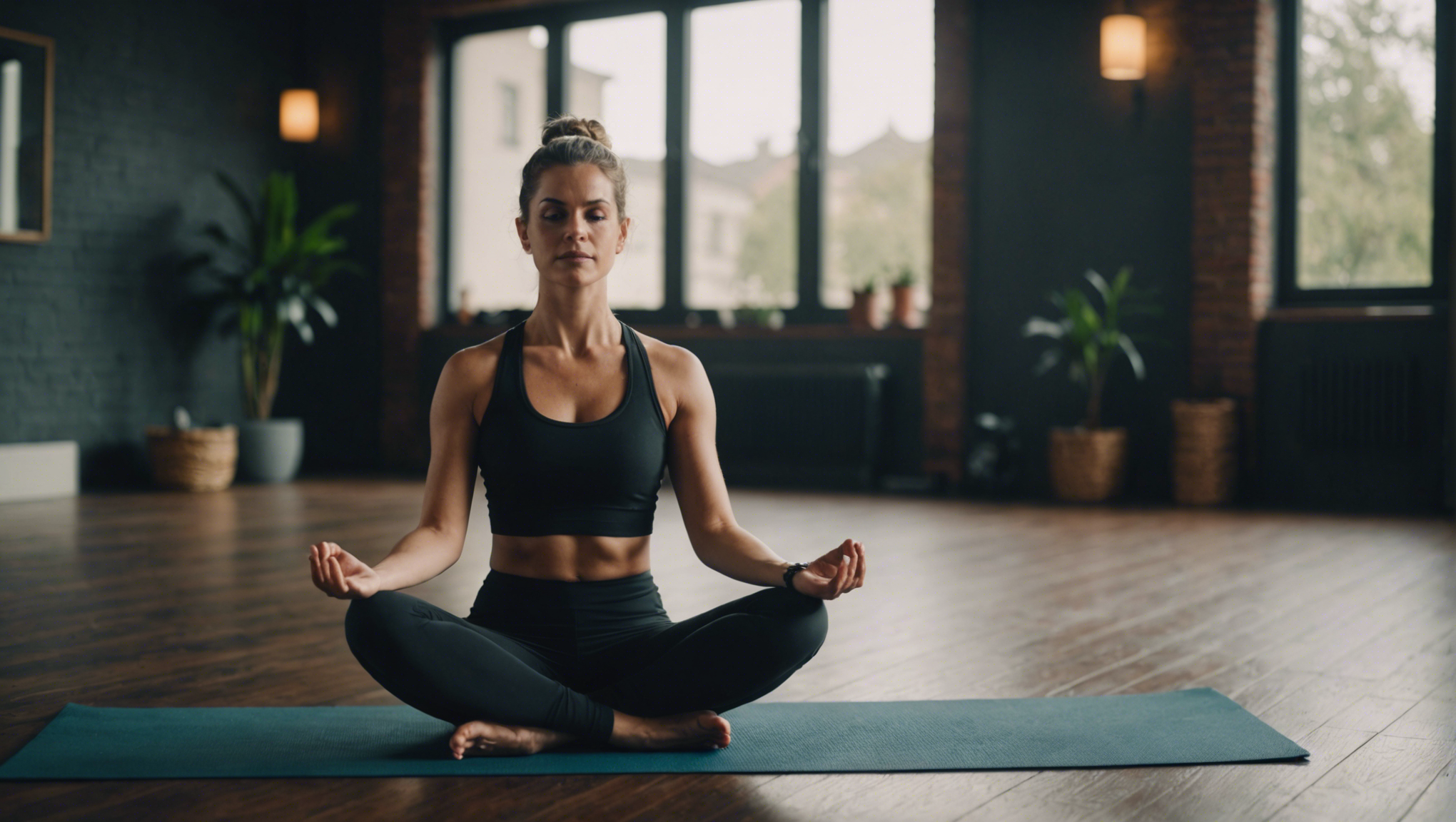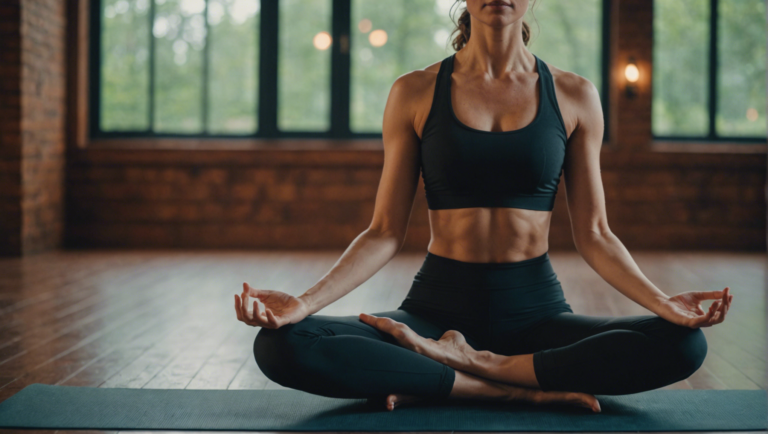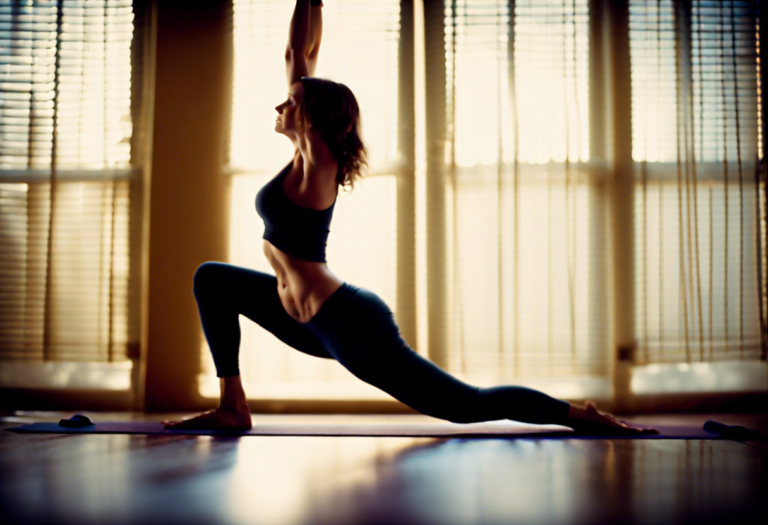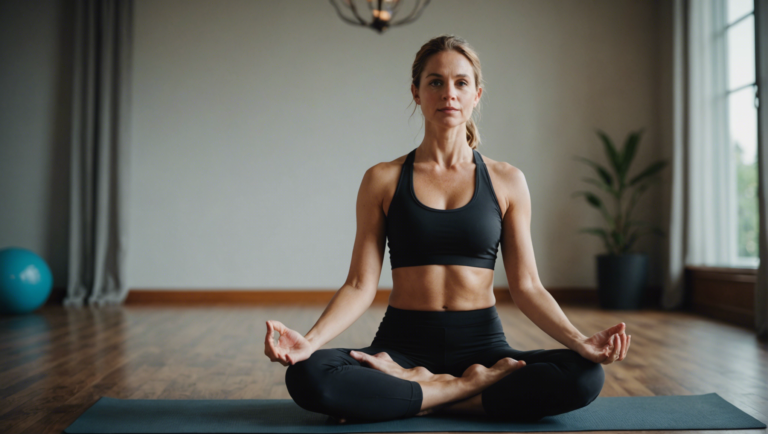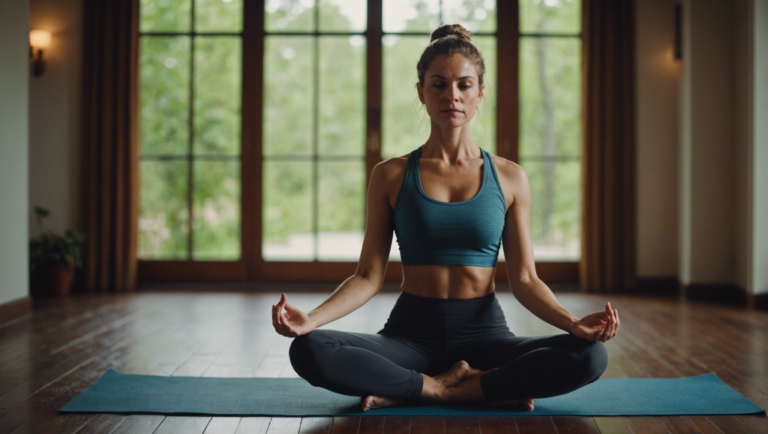Optimal Daily Yoga Duration: How Much Should You Do?
Deciphering the Ideal Yoga Routine: Duration and Frequency
Embarking on a yoga journey introduces a myriad of benefits, from enhanced flexibility and strength to improved mental health. However, one of the most common queries echoed by beginners and seasoned practitioners alike revolves around the optimal duration and frequency for a yoga routine. Delving into this subject requires a nuanced understanding of individual goals, physical capabilities, and lifestyle constraints.
Understanding Your Yoga Goals
Before determining the ideal duration for your personal yoga practice, it’s crucial to identify what you hope to achieve. Are you turning to yoga for stress reduction, flexibility, strength building, or perhaps a combination of these? Different goals necessitate varying practice lengths and frequencies.
Flexibility and Strength Building: For individuals aiming to improve flexibility and build strength, a daily practice of at least 30 minutes is recommended. This duration allows time for a comprehensive routine that can incorporate a variety of postures targeting different muscle groups and aspects of flexibility.
Stress Reduction and Mental Clarity: If your primary objective is to reduce stress and enhance mental clarity, shorter sessions might suffice. A daily practice of 15 to 20 minutes can significantly impact your stress levels and mental well-being, especially if focused on mindful breathing and meditative practices.
Balancing Frequency and Duration
The frequency of your yoga practice is just as important as its duration. A shorter daily practice may be more beneficial than a longer session done less frequently. Consistency is key in yoga, allowing the body and mind to adapt and grow in the discipline.
Daily Practice: Aiming for daily sessions is ideal, even if some days involve only a short 10-minute practice. This consistency helps embed yoga into your routine, making it a sustainable and integral part of your life.
Rest and Recovery: It’s essential to listen to your body and allow adequate rest. restorative yoga sessions or days off is vital, especially after more intensive practices.
Tailoring Your Practice to Your Lifestyle
A successful yoga routine is one that fits seamlessly into your daily life. Busy schedules might not accommodate long sessions every day, but this doesn’t mean you can’t maintain a consistent practice.
Morning vs. Evening Practice: Consider what time of day works best for you. Some find a vigorous morning routine energizes them for the day ahead, while others prefer a calming evening practice to unwind.
Adapting to Life’s Demands: There will be days when fitting in a yoga session seems impossible. On such occasions, even a few minutes of deep breathing or a handful of postures can keep you connected to your practice.
Listen to Your Body
Above all, the most critical advice is to listen to your body. It will guide you towards the right balance of duration and frequency for your routine. What feels nourishing and sustainable one month might feel like too little or too much the next. Be willing to adjust as you go along.
Engage with a Community or Instructor
Joining a community or engaging with a yoga instructor can provide tailored advice and adjustments to your routine. They can offer insights based on their experience and observe your practice from an external perspective, suggesting modifications to ensure your yoga journey is both beneficial and enjoyable.
There is no one-size-fits-all answer to the optimal duration and frequency of a yoga routine — it’s a deeply personal equation that balances your goals, lifestyle, and physical needs. By starting with a clear understanding of your objectives and being willing to adjust your practice as you grow, you can forge a yoga routine that not only nurtures your body and mind but also becomes a sustainable and cherished part of your daily life.
Balancing Intensity and Rest: Key to Sustainable Yoga Practice
Yoga, a practice with ancient roots, has evolved over millennia into a diverse array of styles and disciplines, each offering unique benefits to its practitioners. In the quest for physical health, mental clarity, and emotional balance, many individuals turn to yoga as a holistic solution. However, one of the keys to a sustainable and rewarding yoga journey lies in finding the right balance between practice intensity and necessary rest. This balance is not only crucial for preventing injuries but also for enhancing the overall well-being and progress of the practitioner.
The Importance of Listening to Your Body
Listening to one’s body is paramount in any physical activity, but it takes on a special significance in yoga. The practice emphasizes self-awareness and mindfulness, encouraging individuals to tune into their bodies’ signals and needs. This attentive approach helps identify when to push for progress and when to pull back and rest. Ignoring these signals can lead to overexertion, injury, and burnout, counteracting yoga’s benefits.
Tailoring Practice to Individual Needs
Yoga’s flexibility as a practice allows it to be customized to fit the individual’s needs, capabilities, and goals. Factors such as age, health status, and physical fitness level play a significant role in determining the ideal intensity and duration of practice. Beginners might benefit from shorter, more gentle sessions to build foundation and resilience, while more experienced practitioners might engage in longer or more intense sessions to deepen their practice. The key is to evolve the practice in alignment with personal growth and changing needs.
The Role of Rest and Recovery
Rest and recovery are not merely breaks from practice but are integral components of the yoga journey. They allow the body to heal, adapt, and strengthen in response to the practice. rest days or less intense yoga sessions into the routine can help avoid overtraining and ensure that the body and mind have sufficient time to rejuvenate. Restorative yoga styles, such as Yin or restorative yoga, can be particularly beneficial for integrating rest into a regular practice.
Balancing Practice with Life’s Demands
The demands of daily life—be it work, family, or social obligations—can significantly influence one’s yoga practice. Striking a balance between these demands and yoga means recognizing that some days might allow for a longer, more intense practice, while others might require shorter, more restful sessions. Flexibility in practice, not just in the physical sense but also in how we integrate yoga into our lives, is essential for maintaining a long-term, beneficial relationship with yoga.
Nurturing a Mindful Approach
A mindful approach to yoga encourages presence and attentiveness during practice, allowing practitioners to derive the maximum benefit from each session, regardless of its intensity. This approach nurtures a deeper connection to the self, fostering a sense of peace and contentment that can extend beyond the yoga mat into daily life. It also supports the ability to recognize and honor the body’s needs for activity or rest.
Long-Term Benefits of a Balanced Approach
Adopting a balanced approach to yoga practice ensures its sustainability and amplifies its benefits over time. This approach supports physical health by reducing the risk of injury, promotes mental and emotional well-being by preventing burnout, and encourages spiritual growth by fostering a deeper connection with oneself. As individuals continue on their yoga journey, this balanced approach allows for a harmonious integration of yoga into their lives, enriching their experience of the practice and its benefits.
By honoring the principles of balance, individualization, and mindfulness, practitioners can sustain a fulfilling yoga practice that supports their well-being on all levels—physical, mental, emotional, and spiritual. Cultivating a balanced approach to yoga is not merely about maintaining a routine; it’s about nurturing a lifelong journey towards health, harmony, and self-discovery.
Personalizing Your Yoga Journey: Factors Influencing Duration Needs
Yoga is as much a journey of the self as it is a physical practice, weaving through the fabric of our daily lives with the promise of enhanced flexibility, strength, and inner peace. Yet, a question that frequently surfaces in the minds of both beginners and seasoned practitioners is: How much yoga should one do to reap its benefits? The answer, nuanced and multi-layered, defies a one-size-fits-all approach, urging a closer look at personal goals, physical capacities, and lifestyle considerations. Let’s navigate through the factors that influence optimal yoga duration needs, underlining the importance of tailoring this ancient practice to individual necessities and aspirations.
Understanding Your Body’s Signals
Listening to your body’s cues is paramount in determining how much yoga is beneficial for you. Each individual’s physical condition, including factors like age, health status, and fitness level, plays a crucial role in shaping their yoga practice. If you’re recovering from an injury or dealing with chronic health issues, a shorter, more gentle practice might be most suitable. Conversely, if you’re in robust health and seeking to challenge yourself, longer and more intense sessions could be more fitting.
Aligning Yoga with Life Goals
The intention behind adopting yoga can significantly influence the duration of practice. Are you turning to yoga for stress reduction, to enhance physical fitness, or perhaps to explore its spiritual dimensions? Those seeking mental calm might find solace in shorter daily sessions of meditation and gentle poses, while individuals aiming for physical transformation may benefit from longer, more vigorous practices.
Balancing Time Constraints
In an ideal world, we’d all have ample time to explore various yoga practices to their fullest extent. Realistically, work, family, and social commitments often dictate how much time can be dedicated to yoga. Crafting a routine that harmonizes with your schedule is key, ensuring that yoga enhances your life rather than adding to its pressures. Whether it’s a quick morning sequence or a more extended weekend session, what matters is consistency and personal enjoyment.
Adapting to Energy Levels
Energy ebbs and flows, influenced by myriad factors including sleep quality, dietary habits, and emotional stress. Acknowledging this natural rhythm can guide the adaptation of your yoga practice in duration and intensity. On days filled with vigor, challenging yourself with longer sequences can be invigorating. Conversely, during periods of low energy, a brief practice focusing on restorative poses might be more beneficial, offering rejuvenation without depleting reserves.
Evolving with Your Yoga Journey
As with any skill, your needs from yoga will evolve as you advance. Beginners might start with shorter sessions to build stamina and understanding of basic poses, gradually increasing duration as confidence grows. Experienced practitioners might fluctuate between long sessions and multiple short practices throughout the day, depending on their exploration of different yoga styles and techniques.
Seeking Professional Guidance
While personal intuition is valuable in shaping a yoga practice, professional advice should not be underestimated. A yoga instructor or health professional familiar with your personal health history can offer tailored advice on the most beneficial practice duration and style. Especially for those new to yoga or with specific health considerations, expert guidance can be a crucial factor in crafting a safe and effective yoga routine.
Embarking on a personal yoga journey is an exercise in self-discovery, requiring attentiveness to the body’s needs, goals, life circumstances, and natural rhythms. By considering these factors, you can tailor your yoga practice in duration and style, ensuring it serves as a nurturing and empowering force in your life. Remember, the essence of yoga lies not in the quantity of time spent on the mat but in the quality of awareness, intention, and connection cultivated during the practice.
Beyond the Mat: The Holistic Benefits of Consistent Yoga Practice
Yoga, a practice with roots deep in ancient Indian philosophy, has traversed boundaries and eras to emerge as a beacon of holistic health and wellness in our modern world. It’s not merely a set of exercises for physical fitness; yoga encompasses mental, emotional, and spiritual wellbeing, offering benefits that extend far beyond the mat. The consistent practice of yoga can lead to profound transformations both inside and out, impacting one’s life in ways that are often unexpected and deeply rewarding.
The Synergy of Mind, Body, and Soul
Yoga is unique in its comprehensive approach to health. Unlike many physical fitness routines that focus primarily on strength, flexibility, or stamina, yoga aims to harmonize the body, mind, and spirit, leading to a state of equilibrium and peace. This holistic benefit is achieved through various asanas (postures), pranayama (breathing techniques), and meditation, which together help reduce stress, enhance mental clarity, and promote emotional stability.
Enhanced Physical Health and Vitality
Regular yoga practice has been linked with numerous physical health benefits. It can aid in improving flexibility, building muscle strength, boosting metabolism, and supporting the functionality of vital organs. Yoga also plays a crucial role in alleviating chronic conditions such as back pain, arthritis, and issues related to the respiratory and cardiovascular systems. By fostering an awareness of one’s body and encouraging gentle, mindful movements, yoga can be a powerful tool in the journey towards physical wellness.
Mental Clarity and Emotional Stability
The mental benefits of consistent yoga practice are profound. Through focused breathing and mindfulness exercises, individuals can experience reduced stress levels, enhanced concentration, and a boost in overall mood. The meditative aspects of yoga encourage a present-centered mindfulness, helping practitioners to detach from their daily worries and mental clutter. This enhanced state of mental clarity and emotional stability is crucial for navigating the complexities and challenges of modern life effectively.
A Pathway to Spiritual Awakening
For many, yoga serves as more than just a physical or mental practice; it is a spiritual journey. The principles underlying yoga aim at guiding individuals toward a deeper understanding of themselves and their connection to the larger universe. Through regular practice, individuals can embark on a path of self-discovery and inner peace, exploring the depths of their being and experiencing a sense of unity with the world around them.
The Rippling Effect of Yoga on Daily Life
The benefits of yoga ripple out, influencing various aspects of one’s daily life. The discipline and self-awareness cultivated on the mat can translate into more mindful, compassionate interactions with others and a more harmonious way of being in the world. Additionally, the physical and mental resilience fostered through yoga can empower individuals to face life’s adversities with grace and poise.
Embracing Yoga as a Lifelong Practice
Adopting yoga as a consistent practice is key to reaping its full benefits. This does not necessally require lengthy sessions each day; even a short daily practice can be incredibly effective. What matters is the regularity and intention behind the practice. As one evolves in their yoga journey, the practices can be adapted to meet changing needs and preferences, making yoga a flexible and lifelong companion.
Yoga transcends the boundaries of mere physical exercise, offering a path to holistic health that integrates the well-being of the mind, body, and spirit. Its benefits are multifaceted, offering not only enhanced physical health but also mental clarity, emotional stability, and spiritual awakening. The consistent practice of yoga can profoundly transform one’s existence, impacting all facets of life in a deeply positive way. By embracing yoga as a way of life, individuals can embark on a journey of self-discovery and holistic wellness, experiencing the true essence of being beyond the mat.
Yoga for Every Age: Tailoring Duration for Different Life Stages
Yoga, a practice with ancient roots, has transcended generations, proving its timeless relevance and benefits across all age groups. Its flexibility in practice, focusing on physical postures, breathing techniques, and meditation, offers unique benefits tailored to the specific needs and capabilities of individuals at different life stages. Understanding the optimal yoga duration for each age group can maximize its benefits while minimizing potential risks, ensuring a holistic approach to well-being.
Tailoring Yoga Practices for Children
Children, bursting with energy and curiosity, can greatly benefit from yoga. For them, yoga is less about the duration and more about engagement and fun. Sessions ranging from 15 to 30 minutes are ideal, incorporating playful poses and stories that encourage imagination. This not only nurtures their physical flexibility but also instills a sense of calmness and concentration. Schools incorporating brief yoga sessions have reported improved attention and reduced anxiety among students, highlighting yoga’s adaptability to younger practitioners’ needs.
Adolescents: Balancing Flexibility and Focus
The adolescent years are characterized by rapid physical and emotional growth. Yoga practices for teenagers should aim at promoting self-esteem, body positivity, and stress management. A duration of 30 to 45 minutes is suggested, incorporating more challenging poses that improve strength and flexibility, together with mindfulness practices to aid in concentration and stress relief. This duration helps maintain their interest and provides enough time for a comprehensive session without overwhelming them.
The Active Years: Adults Focusing on Well-being
For adults, the optimal duration of a yoga session can vary based on fitness levels, goals, and lifestyle constraints. However, 45 to 60 minutes is generally recommended for a balanced session that includes warming up, a sequence of poses to build strength and flexibility, and a cool-down period with meditation to relax the mind and body. This duration ensures a comprehensive approach to health, addressing the physical and mental stresses of adult life, from sedentary jobs to familial responsibilities.
Seniors: Gentle Practice for Enhanced Mobility
As individuals age, maintaining mobility, balance, and mental well-being becomes paramount. For seniors, yoga sessions should focus on gentle, low-impact movements, with a duration of 30 to 45 minutes being optimal. This allows enough time for a slower-paced practice that focuses on joint health, stability, and stress reduction, without overtiring the practitioner. Poses can be adapted using props like chairs to ensure safety and comfort, making yoga an inclusive practice for health maintenance in later life.
Integrating Yoga into Daily Life
Regardless of age, integrating yoga into daily life can provide profound benefits. The key is consistency and listening to one’s body. Starting with shorter durations and gradually increasing practice time allows the body to adjust without strain, making yoga a sustainable and enjoyable part of one’s daily routine. Additionally, practicing yoga under the guidance of a certified instructor can help tailor the practice to individual needs, ensuring maximum benefit and safety.
Yoga’s flexibility as a practice, both in posture and in duration, makes it accessible and beneficial for everyone, at any age. By tailoring the length of practice to the unique needs of each life stage, individuals can maximize the holistic benefits of yoga, promoting physical health, mental clarity, and emotional well-being throughout their life’s journey.
Conclusion
Embarking on a yoga journey is akin to navigating a personal voyage toward enhanced well-being, where the incorporation of mindful practices and self-awareness forms the core. Through the lens of the ideal yoga routine, it becomes clear that there is no one-size-fits-all answer to the question of optimal daily yoga duration. Instead, the frequency and length of practice should be tailored to individual lifestyles, goals, and physical capabilities, ensuring a harmonious blend of effort and ease.
Delving deeper into the symbiotic relationship between intensity and rest unravels the importance of listening to one’s body and respecting its limits. A sustainable yoga practice is not merely about the accumulation of hours spent on the mat but about finding a rhythm that acknowledges the body’s need for recovery and growth. This balance is crucial, for it is within the spaces of rest and reflection that the profound benefits of yoga truly unfold.
Personalization emerges as a paramount theme in crafting a yoga routine that resonates with one’s unique life circumstances and objectives. Age, physical fitness, and daily commitments are but a few of the factors influencing how one might approach their yoga practice. Recognizing and honoring these elements enables practitioners to design a yoga journey that is not only fulfilling but also adaptable over time. It is through this customized approach that yoga reveals its capacity to support personal growth and transformation across all spheres of life.
The holistic benefits derived from a consistent yoga practice extend far beyond physical health, permeating the realms of emotional balance, mental clarity, and spiritual insight. Regular engagement with yoga cultivates a sense of inner peace and resilience, equipping individuals with the tools to navigate life’s challenges with grace and equanimity. This expansiveness underscores the transformative power of yoga, which thrives not only in the execution of poses but also in the cultivation of a mindful, compassionate presence in every moment.
Addressing the needs of practitioners across different stages of life, yoga offers a versatile framework that can be adapted to support health and well-being at any age. From the dynamic, exploratory practices suited for the energy of youth to the gentle, restorative sequences that honor the wisdom of older age, yoga provides a supportive companion through the ebb and flow of life’s seasons. Recognizing and embracing the fluidity of one’s yoga practice according to life’s evolving demands is essential in maintaining its relevance and efficacy.
As we traverse the multifaceted landscape of yoga, it becomes evident that the journey itself is the destination. The cultivation of a practice that respects individual needs, while embracing the totality of yoga’s benefits, offers a pathway toward holistic health and harmony. Through the thoughtful consideration of duration and frequency, the integration of balance between exertion and rest, and the personalization of the practice, yoga emerges not just as a series of postures but as a way of life. It is a life that celebrates the unity of body, mind, and spirit, inviting practitioners to explore the depths of their being and the expansiveness of their potential.
Harnessing the timeless wisdom of yoga requires a commitment to exploration, adaptation, and open-hearted inquiry. As practitioners of all ages and stages of life embark on this enriching journey, they discover not only the transformative power of yoga but also the boundless capacities within themselves. It is in the daily return to the mat, with intention and awareness, that the true essence of yoga is revealed, offering a wellspring of health, peace, and fulfillment that flows inexorably into every aspect of life.
